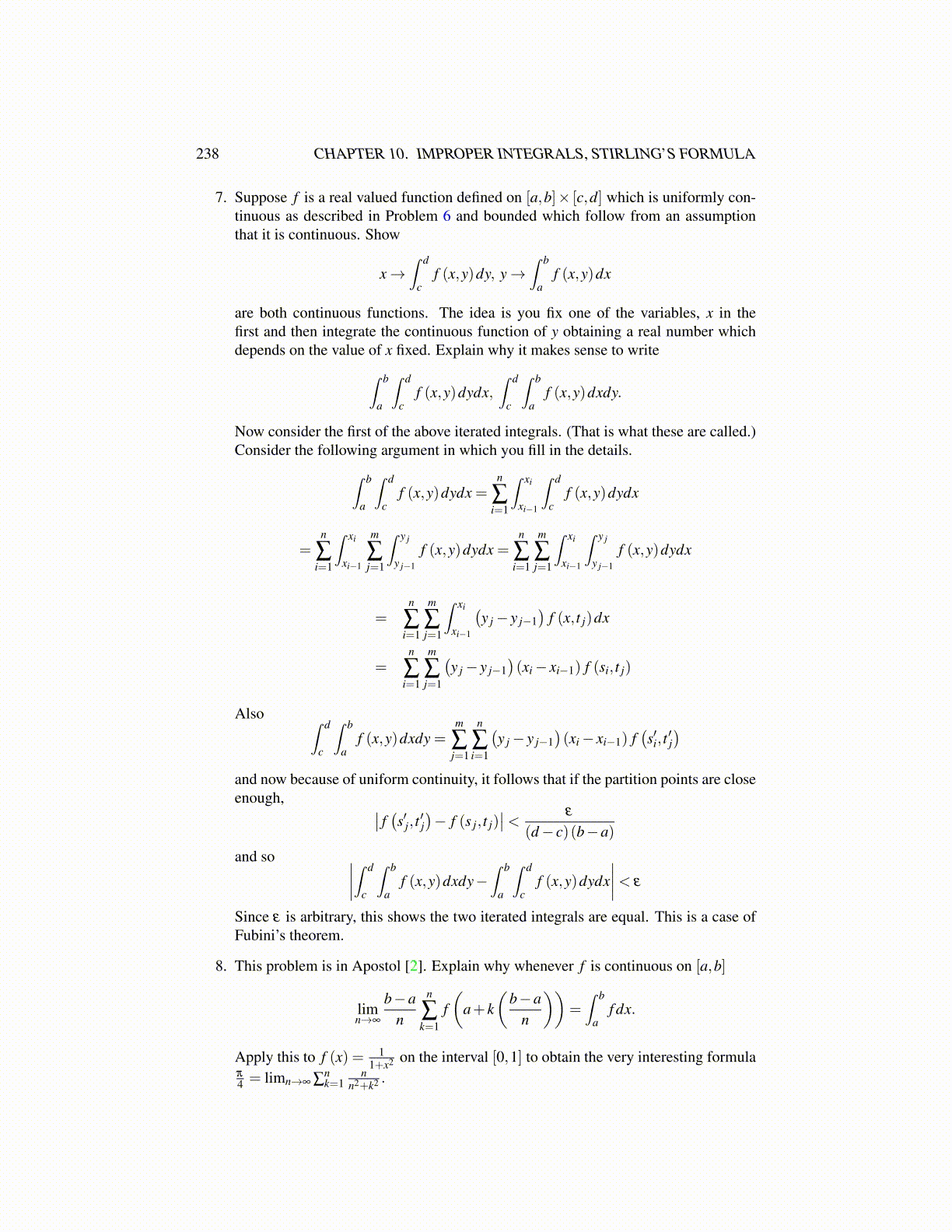
238 CHAPTER 10. IMPROPER INTEGRALS, STIRLING’S FORMULA
7. Suppose f is a real valued function defined on [a,b]× [c,d] which is uniformly con-tinuous as described in Problem 6 and bounded which follow from an assumptionthat it is continuous. Show
x →∫ d
cf (x,y)dy, y →
∫ b
af (x,y)dx
are both continuous functions. The idea is you fix one of the variables, x in thefirst and then integrate the continuous function of y obtaining a real number whichdepends on the value of x fixed. Explain why it makes sense to write∫ b
a
∫ d
cf (x,y)dydx,
∫ d
c
∫ b
af (x,y)dxdy.
Now consider the first of the above iterated integrals. (That is what these are called.)Consider the following argument in which you fill in the details.∫ b
a
∫ d
cf (x,y)dydx =
n
∑i=1
∫ xi
xi−1
∫ d
cf (x,y)dydx
=n
∑i=1
∫ xi
xi−1
m
∑j=1
∫ y j
y j−1
f (x,y)dydx =n
∑i=1
m
∑j=1
∫ xi
xi−1
∫ y j
y j−1
f (x,y)dydx
=n
∑i=1
m
∑j=1
∫ xi
xi−1
(y j − y j−1
)f (x, t j)dx
=n
∑i=1
m
∑j=1
(y j − y j−1
)(xi − xi−1) f (si, t j)
Also ∫ d
c
∫ b
af (x,y)dxdy =
m
∑j=1
n
∑i=1
(y j − y j−1
)(xi − xi−1) f
(s′i, t
′j)
and now because of uniform continuity, it follows that if the partition points are closeenough, ∣∣ f (s′j, t ′j)− f (s j, t j)
∣∣< ε
(d − c)(b−a)
and so ∣∣∣∣∫ d
c
∫ b
af (x,y)dxdy−
∫ b
a
∫ d
cf (x,y)dydx
∣∣∣∣< ε
Since ε is arbitrary, this shows the two iterated integrals are equal. This is a case ofFubini’s theorem.
8. This problem is in Apostol [2]. Explain why whenever f is continuous on [a,b]
limn→∞
b−an
n
∑k=1
f(
a+ k(
b−an
))=∫ b
af dx.
Apply this to f (x) = 11+x2 on the interval [0,1] to obtain the very interesting formula
π
4 = limn→∞ ∑nk=1
nn2+k2 .